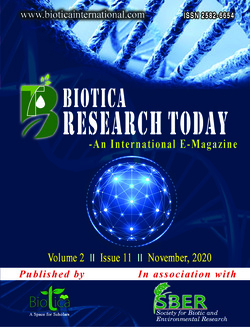
Principles and Practices of Fertigation
G. Thiyagarajan*
Water Technology Centre, Tamil Nadu Agricultural University, Coimbatore, Tamil Nadu (641 003), India
V. Sivakumar
Coconut Research Station, Aliyarnagar, Tamil Nadu (642 101), India
M. Manikandan
Agricultural Engineering College and Research Institute, Tamil Nadu Agricultural University, Kumulur, Tamil Nadu (621 712), India
M. Nagarajan
Agricultural Engineering College and Research Institute, Tamil Nadu Agricultural University, Kumulur, Tamil Nadu (621 712), India
A. Selvaperumal
Dept. of Soil & Water Conservation Engineering, AEC&RI, Tamil Nadu Agricultural University, Coimbatore, Tamil Nadu (641 003), India
DOI: NIL
Keywords: Drip irrigation, Fertigation, Fertilizer use efficiency, Root zone
Abstract
An approach for efficient utilisation of water and fertilisers is necessary for agriculture in the 21st century. As the use of conventional irrigation methods not only results in considerable loss of water but is also responsible for development of wide spread salinity, water logging and leaching of nutrients from the rhizosphere. Fertilisers supplied under traditional methods of irrigation are not effectively utilized by the crops. As an alternative, fertigation is gaining popularity all over the world. It was first started in the late 1960's in Israel with the development of drip irrigation and over 75% of the irrigated area is fertilized by fertigation.
Downloads
not found
Reference
Bar Yosef, B., 1999. Advances in fertigation. Advances in Agronomy, 65: 1–77.
